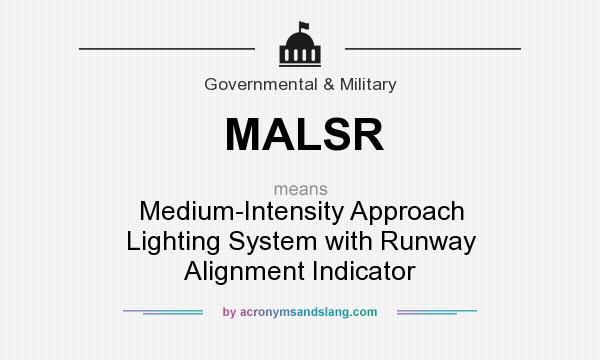
Even without knowing exactly what lights to expect, you can get some orientation and guidance-follow these lights to the pavement. ALSs all have some combination of lights, sometimes flashing, to get your attention and offer some direction. Know your lights and the ALS will better fill that need.Īnyone who has popped out of low clouds knows the runway isn’t always centered in the windscreen or even at your roll or pitch angle. We talked about this in general (“Making IMC Transitions,” October 2012 IFR), but an ALS performs three essential functions: orientation, measurement and guidance. It bridges the gap between instrument flight and visual flight. It’s nearly certain that you’ll first see the ALS, allowing you to descend to 100 feet AGL and search for something resembling a runway.īut the ALS deserves more respect than just a bunch of lights short of the threshold. NATO Standard (BN): Red terminating bars are two parallel columns, each 1000′ long beginning from the runway threshold left column has two lights per row, right column has single lights per row.As much as we drill instrument students on the 10 items from FAR 91.175 (c) you could see to go below DA/MDA, in the real world if we see anything that might be part of the runway, we land on it. It is generally located on the left-hand side of the runway approximately 300 meters beyond the landing threshold of the runway.

The unit is mounted in standard on three legs, mounting on four legs is possible. The PU3L exist in three- and two-lamps versions. The only functional differences between the VASI and PAPI is that the VASI has the red over the white, the PAPI the white actually goes to the right of the red, and the PAPI offers higher precision (or more glideslopes depending how you look at it a larger airliner with a high cockpit may elect to fly a slightly higher … What is the difference between PAPI and Apapi?ĪPAPI system is used as PAPI system but it is composed of one wing bar formed by just two units. What is the difference between VASI and PAPI lights? For an instrument approach, a nonfunctional PAPI will result in a higher minimum altitude before visual contact with the runway is necessary. No, as the pilot can judge the descent angle visually. The omnidirectional horizontal beam pattern, bright flashes and a sequential strobing flash pattern that rolls toward the runway threshold helps the pilot identify the runway in use. ODALs (Omni-Directional Approach Lights) are used to identify the approach end and centerline of the runway. In most of the case the missed approach points are at 1 DME or more. For ILS cat 3B operation the RVR can be up to 50m. ✈✈The first picture shows how a pilot sees the lights on a runway or a carrier during the approach.Īs per Annex 14, PAPI (or any Visual approach slope indicator) is mandatory for turbojet aircraft operations. PAPI, VASI, and OLS They are precision approach path indicator(PAPI), visual approach slope indicator(VASI), and Optical landing system(OLS). What does Alsf mean in aviation?Īpproach Lighting System with Sequenced Flashing LightsĪLSF I (Approach Lighting System with Sequenced Flashing Lights) is used on Category I runways during instrument landing approach to align the aircraft with the centerline of the runway and to establish vertical orientation.

Operational requirements dictate the sophistication and configuration of the approach light system for a particular runway. Lighting Systems – Precision Approach Path Indicators (PAPI) Approach Light Systems ( ALS ) provide the basic means to transition from instrument flight to visual flight for landing.

Medium-Intensity Approach Lighting System with Sequenced Flashers What does Alsf 2 stand for?ĪLSF II (Approach Lighting System with Sequenced Flashing Lights) mode is used on Category II runways during instrument landing approach to align the aircraft with the centerline of the runway and to establish vertical orientation. The MALSF system usually is a 1400-foot-long array of lights but can be longer or shorter depending on local terrain and requirements. The Honeywell MALSF System is a medium intensity approach lighting system that provides a visual lighting path for landing aircraft. Visual Guidance Lighting Systems – Medium Intensity Approach Light System with Runway Alignment Indicator Lights (MALSR) The MALSR is a medium-intensity approach lighting system (ALS) installed in airport runway approach zones along the extended centerline of the runway. What is the difference between PAPI and Apapi?.What are the differences between Alsf 1 and Alsf-2 lighting systems?.


 0 kommentar(er)
0 kommentar(er)
